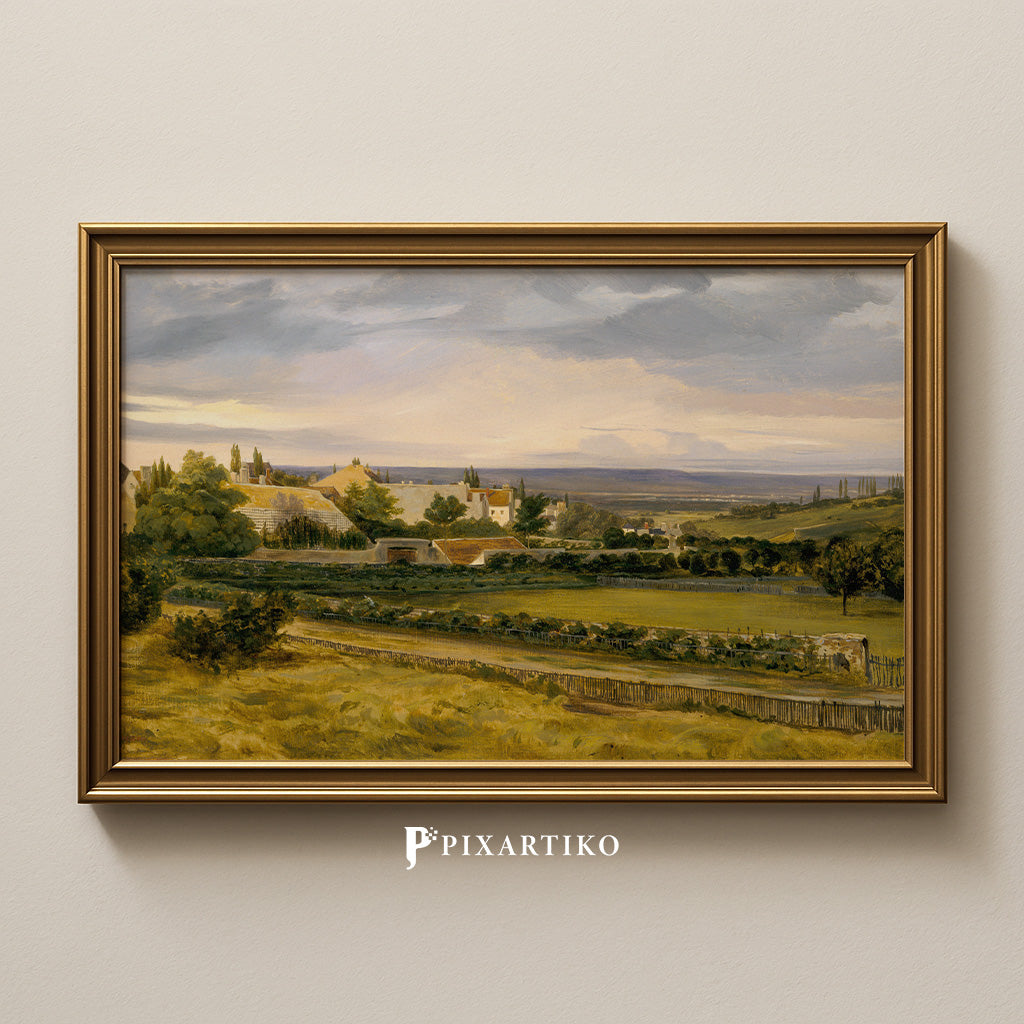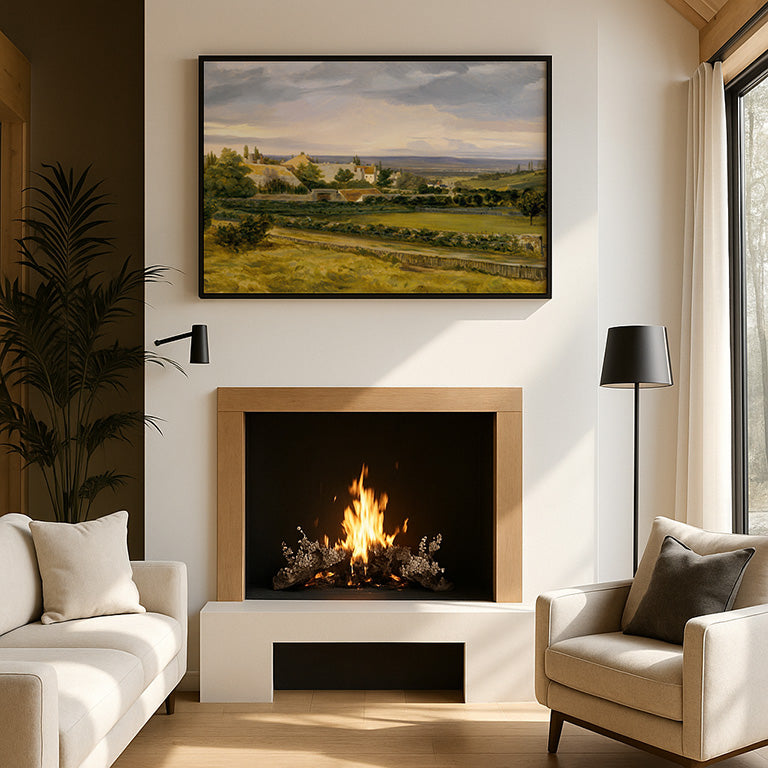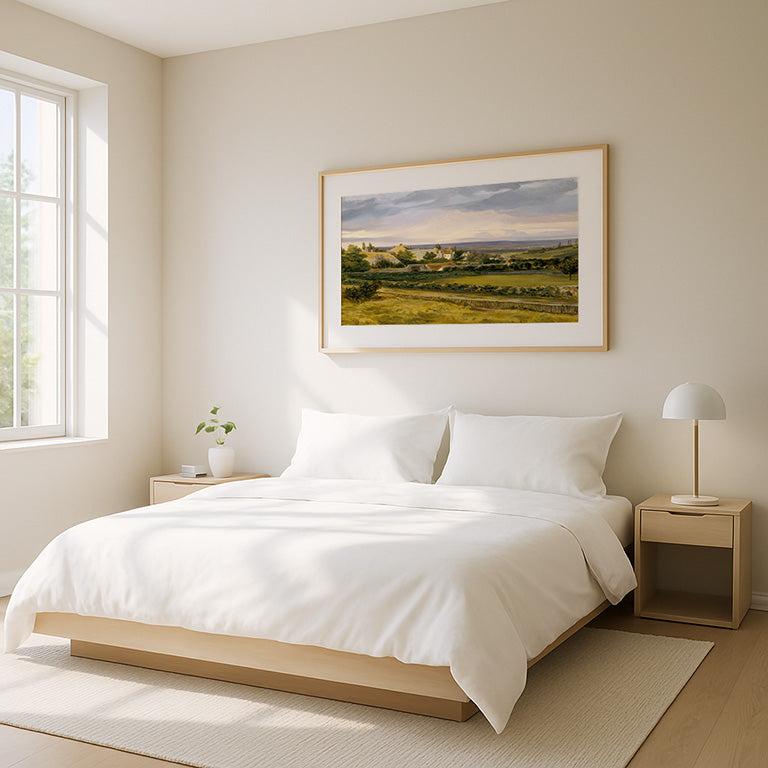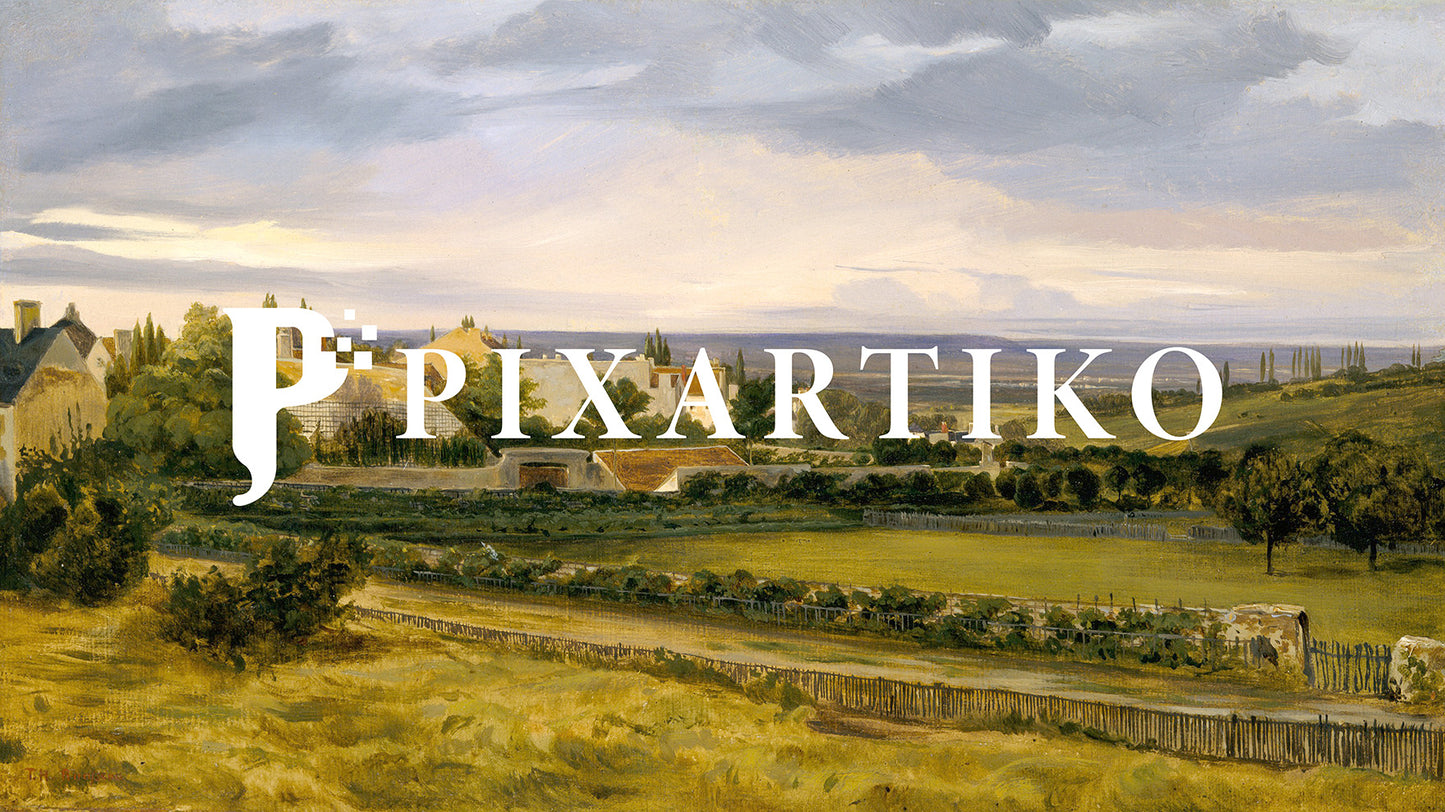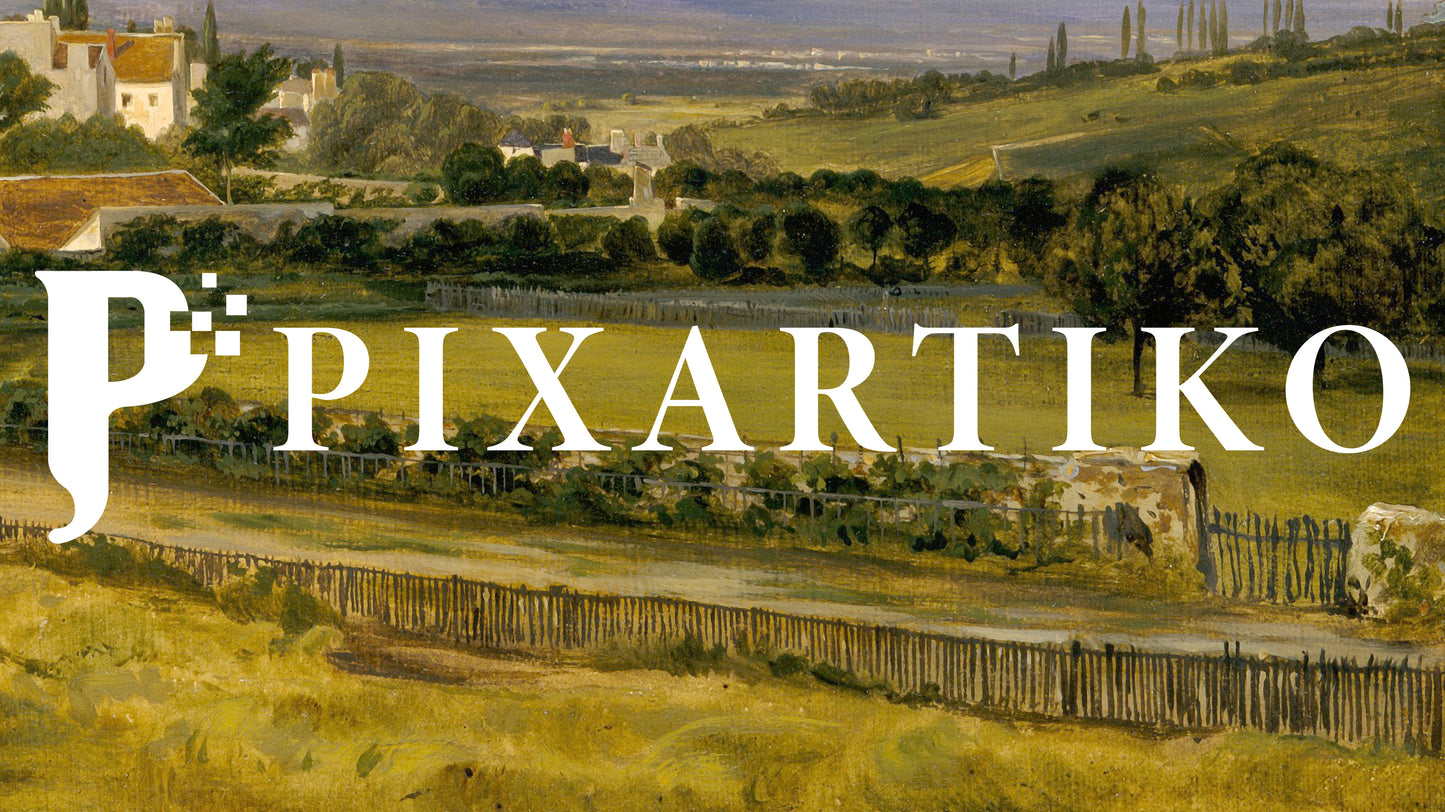A Village in a Valley | Vintage French Landscape
A Village in a Valley | Vintage French Landscape
No se pudo cargar la disponibilidad de retiro
Vintage French Countryside Landscape Art Print | Théodore Rousseau | Early 19th Century Digital Download
Step back in time with A Village in a Valley (late 1820s), an early landscape by French artist Théodore Rousseau, renowned for his role in the Barbizon School. This tranquil rural scene captures the gentle charm of the French countryside—soft light, cultivated fields, and quiet rooftops—perfect for those who love pastoral settings and vintage European decor.
Great for gallery wall displays, French country interiors, or as a printable gift for art collectors and nature lovers alike.
➤ High-resolution digital download
➤ Ready to print and frame
➤ Ideal for French farmhouse style, rustic landscape lovers, or 19th century art fans

Pixartiko Collective – Usage License
Prints allowed for personal use and resale only as physical products in local shops. Use in other physical goods permitted if pixartiko.com is credited when possible.
Digital resale, sharing, or publishing is strictly forbidden.
Designs are not public domain and cannot be distributed online.
© pixartiko.com – All rights reserved.
Print Sizes
🖼 Included Print Sizes (No Cropping Needed)
This ultra-high resolution digital file is optimized for printing at the following standard sizes, no cropping or borders required. Just download, print, and frame:
| Inches | Centimeters | Suggested Use |
|---|---|---|
| 24 x 13.5 | 61 x 34.3 | Large panoramic wall art or poster |
| 20 x 11.25 | 50.8 x 28.6 | Horizontal poster, art print |
| 16 x 9 | 40.6 x 22.9 | Standard wide-format frame (US/EU) |
| 14 x 7.9 | 35.6 x 20 | Framed art or photography |
| 12 x 6.75 | 30.5 x 17.1 | Medium-size decor, shelf frame |
| 10 x 5.6 | 25.4 x 14.2 | Desk frame, small print |
| 8 x 4.5 | 20.3 x 11.4 | Greeting card, compact photo |
🖨️ All sizes are print-ready at 300 DPI, maintaining the original image ratio. No cropping or borders required.
📂 Your download includes:
- 1 ultra-high resolution JPEG file (Aspect ratio ≈ 16:9 – Horizontal / landscape format).
- Artistic Declaration Certificate in PDF.
- Free gift: The Ages of Painting guide — a visual journey through the history of painting.
🎨 Need a different size or format?
No problem! Just send me a message and I’ll be happy to adapt it for you.
🎧 Art Review
“A Village in a Valley” by Théodore Rousseau (Late 1820s)
Before Théodore Rousseau became the spiritual anchor of the Barbizon school, he was already quietly reshaping the landscape genre from within. A Village in a Valley, painted in the late 1820s, is a luminous testament to the young artist’s early gifts and a remarkable prelude to his mature style.
What strikes the viewer first is not just the topographical fidelity — though Rousseau renders the village with charming accuracy — but the balance he creates between intimacy and openness. The houses, hedgerows, and distant fields seem bathed in the tender afterglow of a long summer day. And yet, there is nothing saccharine or sentimental in this view. Instead, the painting feels like a letter from a real place, quietly observed and deeply felt.
The palette, warm but tempered, speaks to Rousseau’s innate understanding of atmospheric light. He does not dramatize the landscape. He dignifies it. The village isn’t idealized but celebrated in its quiet order — its fences, gardens, and sun-drenched rooftops speaking of daily life in its most grounded form.
Rousseau’s brushwork here is disciplined, even conservative, but attentive. This is not yet the layered impasto or glowing glazes of his Fontainebleau canvases. Still, the seeds of that evolution are present in the sky’s tender diffusion and the way shadows cling to trees and walls.
For today’s collector or museum patron, A Village in a Valley offers more than historical curiosity. It is an invitation to see the origins of a revolutionary landscape eye. It also grants us a rare privilege — to gaze upon a French village not merely imagined, but captured in time, before the upheavals of modernity transformed such places forever. Rousseau, even as a young man, knew how to stop the world just long enough for us to see its soul.

Share
